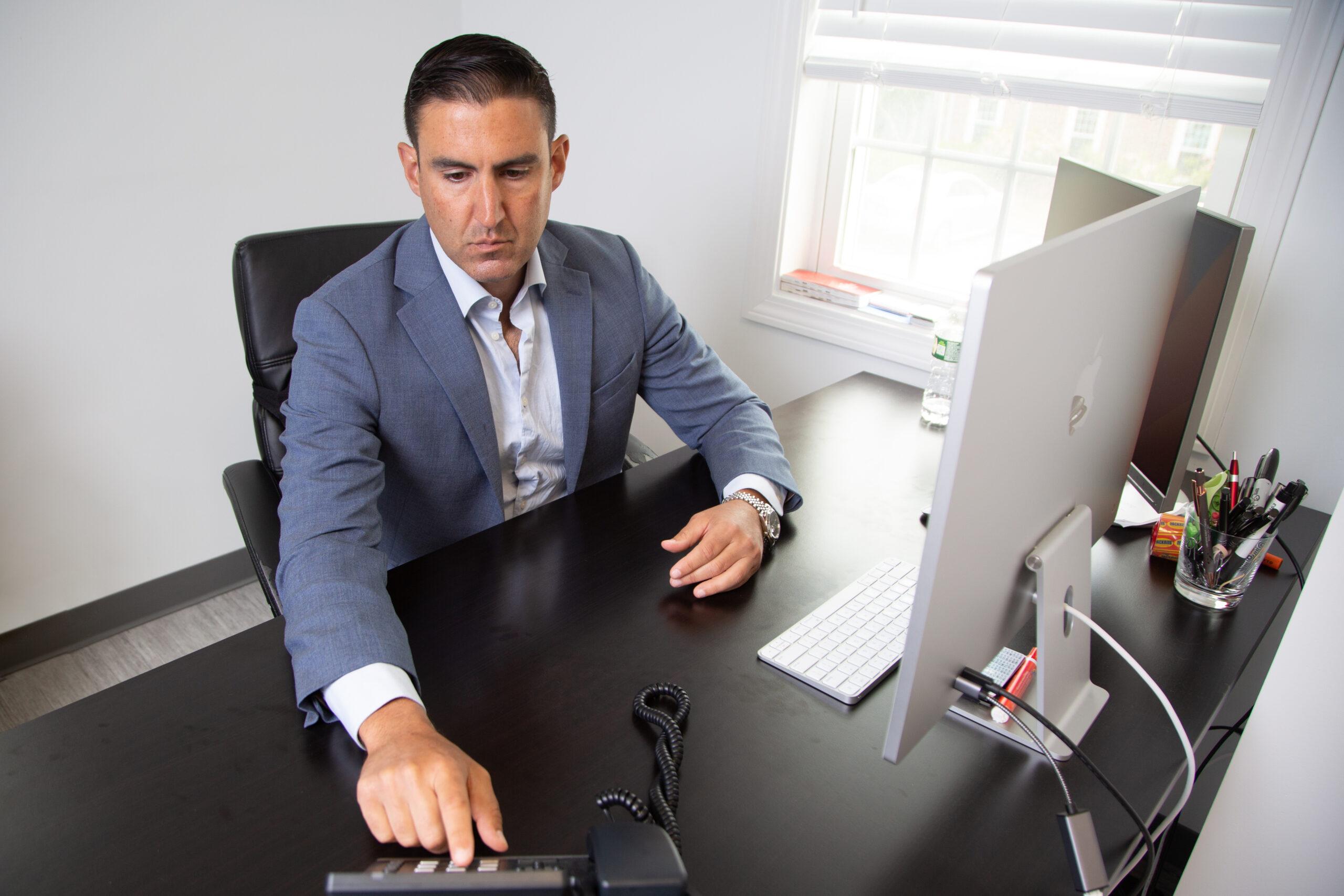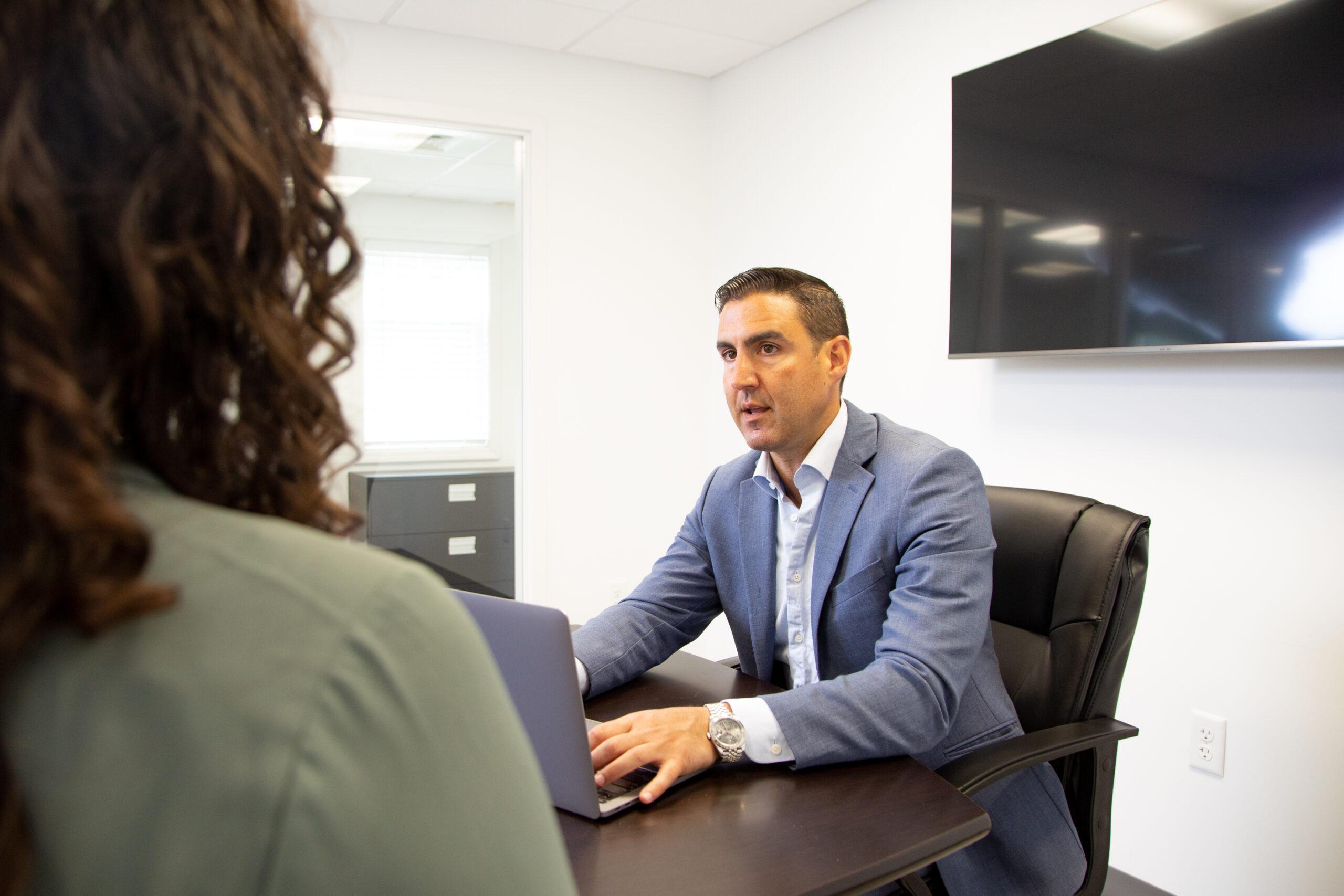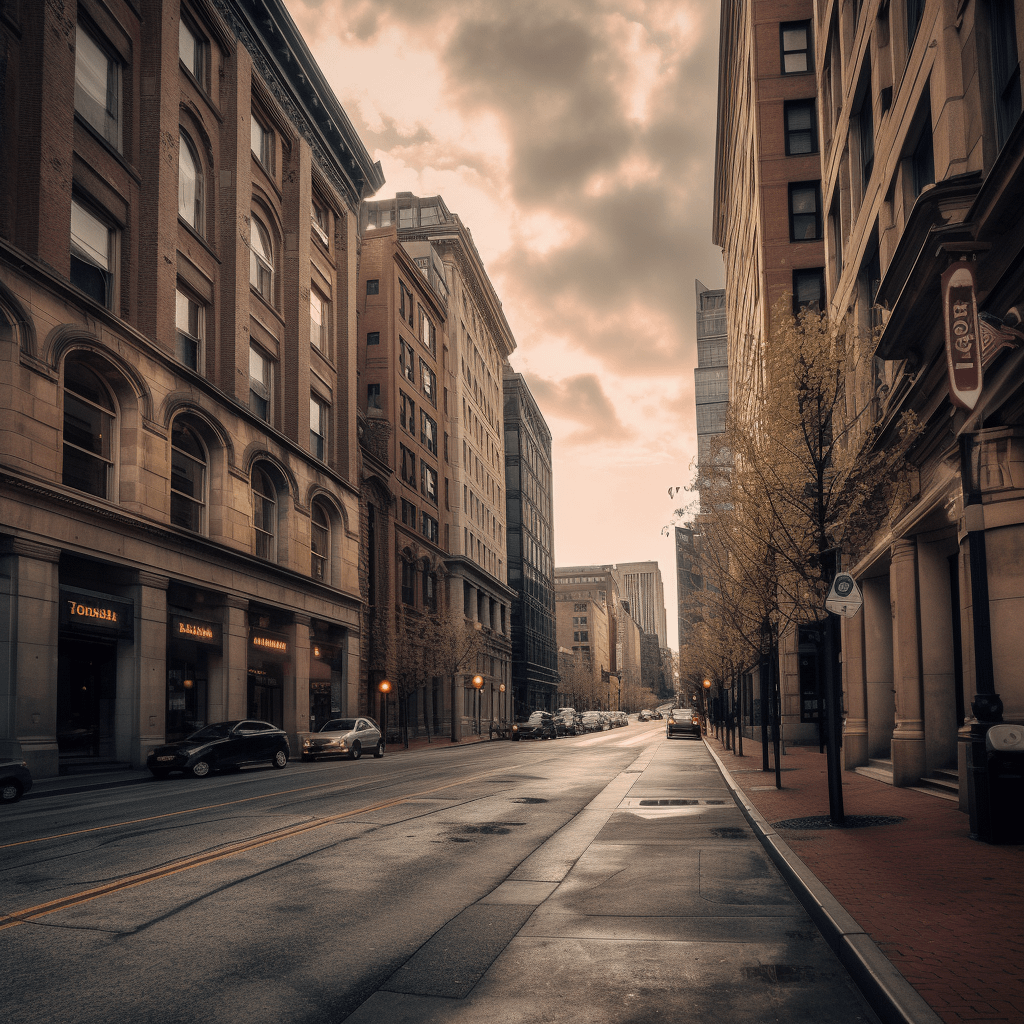No one should have to suffer an injury while out walking, especially by the 4,000 to 7,000 moving pounds of steel, plastic, aluminum, and fiberglass that make up the average car or truck. Unfortunately, in Boston, MA pedestrian accident injuries have been on the rise in recent years. Pedestrian accidents can lead to some of the worst injuries and medical costs.
If you or a loved one have been struck by a vehicle while walking in Boston, you may be able to recover significant compensation by filing a pedestrian accident lawsuit in addition to an insurance claim. A Boston pedestrian accident lawyer can review the facts of your case, help you gather the necessary evidence, and recommend the best course of action for you to recover maximum compensation. Working with an accident attorney from CarAccident.Law means having a local expert by your side who is dedicated to helping you succeed in your case.
Pedestrian Accident Statistics in Boston
According to MassGOV data, Massachusetts averaged about 70 pedestrian fatalities per year between 2017 and 2021. Pedestrian deaths were on the rise in 2021, with 76 fatalities reported. However, in 2022, over 100 pedestrian deaths were reported, representing a 35% increase.
It comes as no surprise that Boston has the most pedestrian fatalities out of all 351 cities in Massachusetts, reporting 12 fatal pedestrian crashes in 2022. Also in 2022, Boston saw 449 pedestrian injuries related to accidents and crashes, according to Vision Zero data.
Pedestrian accidents most commonly involve male pedestrians in Boston, and pedestrian accidents are most likely to occur in Boston between October and March.
Hit and Run Pedestrian Accidents in Boston
One of the most difficult kinds of pedestrian accidents to seek compensation for is a hit and run. In Boston, it is illegal to leave the scene of an accident that has caused either an injury or damage to property. Doing so can result in a fine, loss of driver’s license, and even incarceration for up to two years. If you are a driver and hit a pedestrian, you have not only a moral responsibility, but also a legal obligation to stop and get them help.
Crosswalk Laws in Boston, Massachusetts
Massachusetts General Law Title XIV Chapter 89 Section 11 outlines crosswalk laws in Boston. In Boston, MA, pedestrians have the right of way at any marked crosswalk without traffic control signals. Boston pedestrians also have the right of way at four way stops with intersections, in most school zones and construction zones, and whenever they are approaching within 10 feet from the driver.
Failure to stop and yield to pedestrians crossing can result in a fine of up to $200 in Boston. Cars and trucks that try to pass another car that is following the crosswalk law may also be subject to a fine. If you have been injured in an accident because of a driver’s failure to adhere to Boston crosswalk laws, this may increase their liability in a pedestrian car accident lawsuit.

Boston’s Most Dangerous Intersections for Pedestrians
According to the Boston Vision Zero Project, the top five most dangerous intersections for pedestrians in Boston are:
- Massachusetts Ave at Beacon Street
- Massachusetts Ave at Columbus Ave
- Massachusetts Ave at Albany Street
- Massachusetts Ave at Melnea Cass Boulevard
- Columbia Road at Washington Street
These five city-owned intersections had the highest rates of pedestrian crashes involving injuries over a three year period.
What Causes Pedestrian Accidents in Boston?
Pedestrian accidents are often caused by drivers who don’t pay attention to their surroundings. The streets of Boston offer some unique challenges, however, that contribute to a high rate of pedestrian accidents in the city, including:
- Speeding: Speeding citations rose by 81 percent in 2020, according to the Boston Herald, and have remained relatively high since. Speeding leads to more accidents than almost any other cause in Massachusetts and can be especially deadly for pedestrians. Speeding can make a minor accident much worse and reduces the ability of drivers to react to sudden changes in the roadway. A speeding driver may not spot a pedestrian who has entered a crosswalk, slipped and fallen due to snow or ice, or stepped down from the sidewalk in time to prevent an accident.
- Failure to yield: Boston drivers must yield to pedestrians in marked crosswalks, according to state law. Failure to do so can result in dangerous accidents, including multi-car pileups and pedestrian injury.
- Distracted driving: Smartphones, navigation devices, sound systems, and more can all distract drivers, causing them to pay less attention to pedestrians who may be entering the roadway.
- Vehicle malfunction: When a vehicle malfunction causes an accident, there may be additional parties who can be held liable through a Boston pedestrian accident lawsuit. If a driver saw a pedestrian crossing the street but was unable to stop their vehicle due to a malfunction, the vehicle or part manufacturer may bear liability. In such pedestrian accidents, there may be multiple avenues to pursue compensation.
- Poor road design: In Boston, confusing intersections, poorly marked crosswalks, and crowding alongside major city transportation corridors such as Melnea Cass Boulevard and Warren Street along Nubian Square can spell disaster for pedestrians.
- Cold weather: Approximately 55 percent of pedestrian fatalities happen during the colder months in Boston, MA. Some contributing factors include decreased visibility, earlier nightfall, and difficulty accessing sidewalks because of snow and ice.
- Rush hour: Over 40 percent of pedestrian fatalities occur in Boston, MA between 5 p.m. and 10 p.m. Pedestrians out on evening runs, walking after dark or at dusk, and taking commuter trips that overlap with “rush hour” traffic are particularly at risk of being involving in an accident in Boston.
- Tourist season: Boston’s colonial architecture, many museums, and historic charm makes it a popular destination for tourists, many of whom may be unfamiliar with local right of way laws and Boston traffic patterns. When visiting drivers travel the streets of Boston, or pass by on their way to the Cape and surrounding beaches, they may be less likely to pay attention to pedestrians, who also increase in number during summer months.
- Drunk driving: Driving while under the influence of drugs or alcohol is more common in Massachusetts than in other states. Studies show that about 1.7 percent of adults in the United States still drive after drinking to impairment. However, in Massachusetts, the number rises to 2.5 percent of adults. Drunk drivers and pedestrians are a deadly combination, especially in crowded nightlife areas of Boston such as the historic Downtown/Faneuil Hall, Cambridge, the Theater District, South End, Seaport, and Allston/Brighton.
Common Pedestrian Accident Injuries in Boston
Drivers in cars and trucks have seatbelts, airbags, and the steel frames of their vehicles to protect them against impact in the event of an accident. For pedestrians, the outcome of a crash is often far worse. Pedestrian injuries resulting from car accidents often resulting in severe physical and emotional trauma, high medical bills, and long lasting physical or mental limitations in some cases.
Common pedestrian accident injuries in Boston include:
- Cuts and bruises
- Broken bones
- Internal bleeding and organ damage
- Emotional trauma, including PTSD
- Catastrophic injuries
- Traumatic brain injuries
- Spinal cord injuries
- Loss of a limb
- Permanent scarring and disfigurement
- Wrongful death
How is Liability Determined for Boston Pedestrian Accidents?
When filing a pedestrian injury lawsuit in Boston after an accident, you may be able to recover more damages than a simple insurance claim can cover if you are able to prove that the driver violated in your case their duty of care to you or your loved one as a pedestrian. In Boston and throughout Massachusetts, drivers are required to act with reasonable care when operating their car, truck, or motorcycle. Examples of reasonable care include yielding to pedestrians, driving sober, paying attention to the road, and obeying traffic laws and signals.
If the defendant caused your injuries through reckless or careless behavior that violates their duty of care, you may be able to hold them liable through a pedestrian accident lawsuit with the help of a Boston lawyer. An example of a breach of care might be a driver who hits a pedestrian because they failed to properly check the crosswalk while turning. Even if the driver did not violate a specific traffic law, such as running a red light or driving under the influence, their reckless action caused preventable injuries. Liability becomes even more clear when there are eyewitnesses, if an accident is a driver’s second or third offense, or if there were other factors involved that are against Massachusetts law, such as driving intoxicated or driving with a suspended license.
CarAccident.Law can get you in touch with a skilled lawyer in the Boston area so you don’t have to guess about whether you have a valid claim for compensation.
What Damages Can You Recover after a Pedestrian Accident in Boston?
If you have been injured in a Boston pedestrian accident, you may be able to recover economic damages such as:
- Your medical bills and expenses, including past bills from ambulance rides, ER visits, hospital stays, and surgeries, as well as future expenses such as rehabilitative care or physical therapy related for severe and permanent injuries
- Lost wages during time off work, as well as lost future earning capacity in the event of a disabling accident
- Property damage
- Additional accident related expenses, such as if you needed to use a rideshare service due to loss of mobility after a pedestrian accident
A good pedestrian injury accident attorney will also be able to asses non-economic damages that may arise from a Boston motor vehicle accident, such as:
- Pain and suffering during and after the accident
- Disability
- Loss of enjoyment of life
- Trauma and mental anguish
- Loss of companionship or consortium, if your loved one was killed in a pedestrian accident
- Loss of parental or spousal support
How to File a Boston Pedestrian Accident Lawsuit
To file a Boston pedestrian accident lawsuit, contact a qualified attorney. CarAccident.Law can connect you with experts in the field who are well-equipped to guide you through the civil claims process according to your personal needs.
Stages of filing a Boston pedestrian accident lawsuit include:
- Gathering evidence and contacting eyewitnesses
- Compiling medical bills and expenses
- Filing and retrieving a copy of the police report
- Assembling expert testimony to support your claim, if necessary
- Researching similar case law and supporting context for your accident
- Communicating with insurers
- Filing paperwork and paying court fees
- Negotiating with the defendant’s legal team
- Building your case and presenting it in court, if necessary
How Can a Boston Pedestrian Accident Lawyer Help?
A Boston pedestrian accident attorney can take the burden of your accident claim off your shoulders at a time when you most need to focus on healing and attending to personal matters. Filing a pedestrian accident injury case in Boston is a time sensitive situation, and the sooner you file, the greater your chances of compensation may be.
However, when you need to ensure eyewitness accounts are fresh, file accident reports, gather evidence, and strengthen your case is often a time when you also need to be focused the most on your own medical care. A Boston pedestrian accident lawyer can step in and fill the gap, ensuring that you don’t miss out on the compensation you need and deserve for your losses.

Boston’s Pedestrian Accident Prevention Initiatives
Pedestrian injuries in Boston road traffic accidents are a serious matter, one that numerous governmental and non-profit organizations are attempting to address. Pedestrian accidents can be prevented with proper road design, an action plan in place to reduce speeding and distracted driving, as well as community investment in making Boston a more walkable city.
Steps that are currently underway in Boston to reduce pedestrian accidents include:
- City of Boston’s Vision Zero Plan aims to lower speeds and implement traffic calming measures in “priority corridors,” including Massachusetts Ave, Codman Square, Stonybrook, and the Talbot-Norfolk Triangle. Vision Zero also supports Safe Routes to School, the Green Links Initiative and the Boston Bike Network Path. The goal of the Vision Zero framework is to eliminate traffic fatalities in Boston by 2030.
- Boston’s 2023 “Safety Surge” infrastructure upgrade that plans to build 10 speed bump zones every year.
- WalkBoston (now WalkMassachusetts) is a 501(c)3 pedestrian advocacy group that leads regular Walk Audits, promotes access to public transportation and parks in Boston and gateway cities, and drives investment in walkable communities.
Boston Pedestrian Accident Lawyer: FAQs

What’s the difference between an insurance claim and a pedestrian accident lawsuit?
An insurance claim only covers compensation for injured parties up to a certain level and cannot account for additional damages a pedestrian might suffer from an accident such as future damages, pain and suffering, emotional and mental trauma, loss of enjoyment of life, and more. Insurance claims are useful for minor accidents, or to cover a certain extent of property damage. However, Boston pedestrian accidents often include much more damage than the average fender bender.
While pedestrians should not engage in risky behaviors like jaywalking, ignoring traffic signals, or stepping out in front of cars when it is too late for drivers to react, they are still given additional considerations in many traffic accident claims. In these cases, a pedestrian accident lawsuit can help an injured person recover additional damages that an insurance claim would not account for.
When should you file an insurance claim vs a civil lawsuit for a Boston pedestrian accident?
Massachusetts is a no-fault state, meaning that in general you can expect to file a claim on your own insurance first after an accident. However, you should consider filing a civil lawsuit as well after a Boston pedestrian accident if any of the following factors apply:
- Your injuries are severe or require extensive medical treatment
- You were not at fault, or most of the blame for your accident belongs to another party
- You have suffered distress, trauma, or pain and suffering as a result of your accident
- You have lost a loved one after a pedestrian accident
- Your quality of life has changed after a pedestrian accident
- You are unable to work the same hours or at the same job after a pedestrian accident
- The settlement offer from an insurance company is not fair or does not fully account for your situation
- You have additional costs that cannot be accounted for in an insurance payout
A pedestrian accident injury attorney serving the Boston area can help you understand what additional compensation may be available to you through a civil lawsuit that your insurance won’t cover.
What evidence should you collect for a pedestrian accident lawsuit in Boston?
Pedestrian accident lawsuits require you to prove liability, meaning another party (whether the driver, the manufacturer of the car, the City of Boston, or any other involved individual or entity) caused your injury by acting recklessly. Examples of evidence include photographs or videos of the scene of the accident, police reports, testimony from medical and vocational experts, reports of similar accidents at the same location, eyewitness accounts, and anything else that helps build your claim.
Can you still receive compensation if you were jaywalking at the time of the Boston pedestrian accident?
Even in cases of jaywalking, compensation may be possible for injured pedestrians in Boston. Because Massachusetts is a no-fault state, your own insurance can help you recover some of your costs, like your medical bills, a portion of your missed wages, and any property damage you suffered. However, a skilled pedestrian injury accident lawyer may also be able to help you win additional compensation, due to the comparative negligence standard applied in Boston civil courts.
In Massachusetts, as long as the injured party is less than 51 percent responsible for the accident, they may be able to recover some of their costs in a lawsuit. However, they may be awarded reduced compensation for every percentage they are found liable under the comparative negligence standard. For example, if you were jaywalking as a pedestrian when you were hit by a driver talking on their cell phone, the driver may be considered more at fault in that case.
Connect with a Boston Pedestrian Accident Attorney Today
When you need help after a pedestrian accident in Boston, you need qualified legal representation. For a consultation about the specifics of your case, contact CarAccident.Law to schedule a free consultation with a Boston pedestrian injury accident lawyer today.








